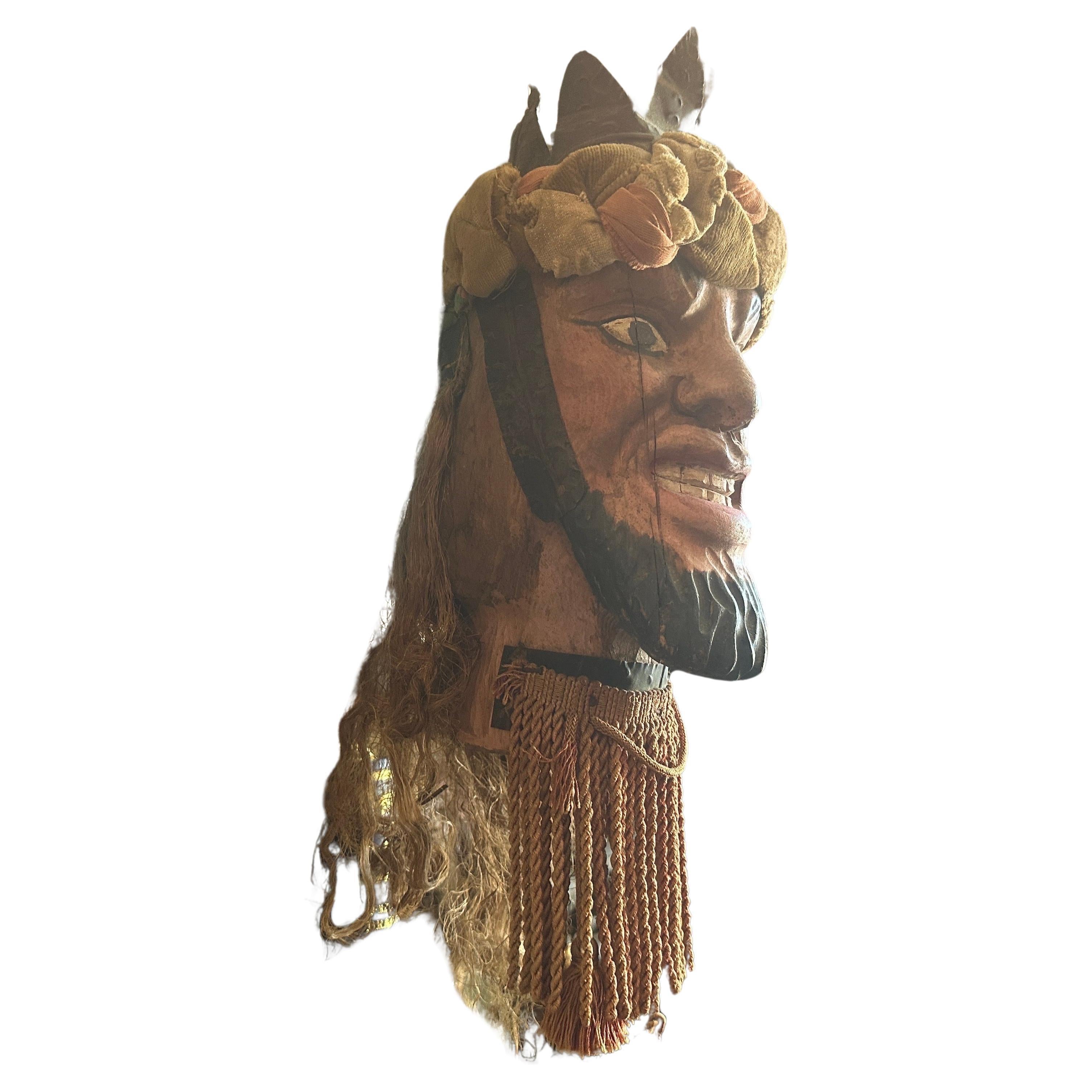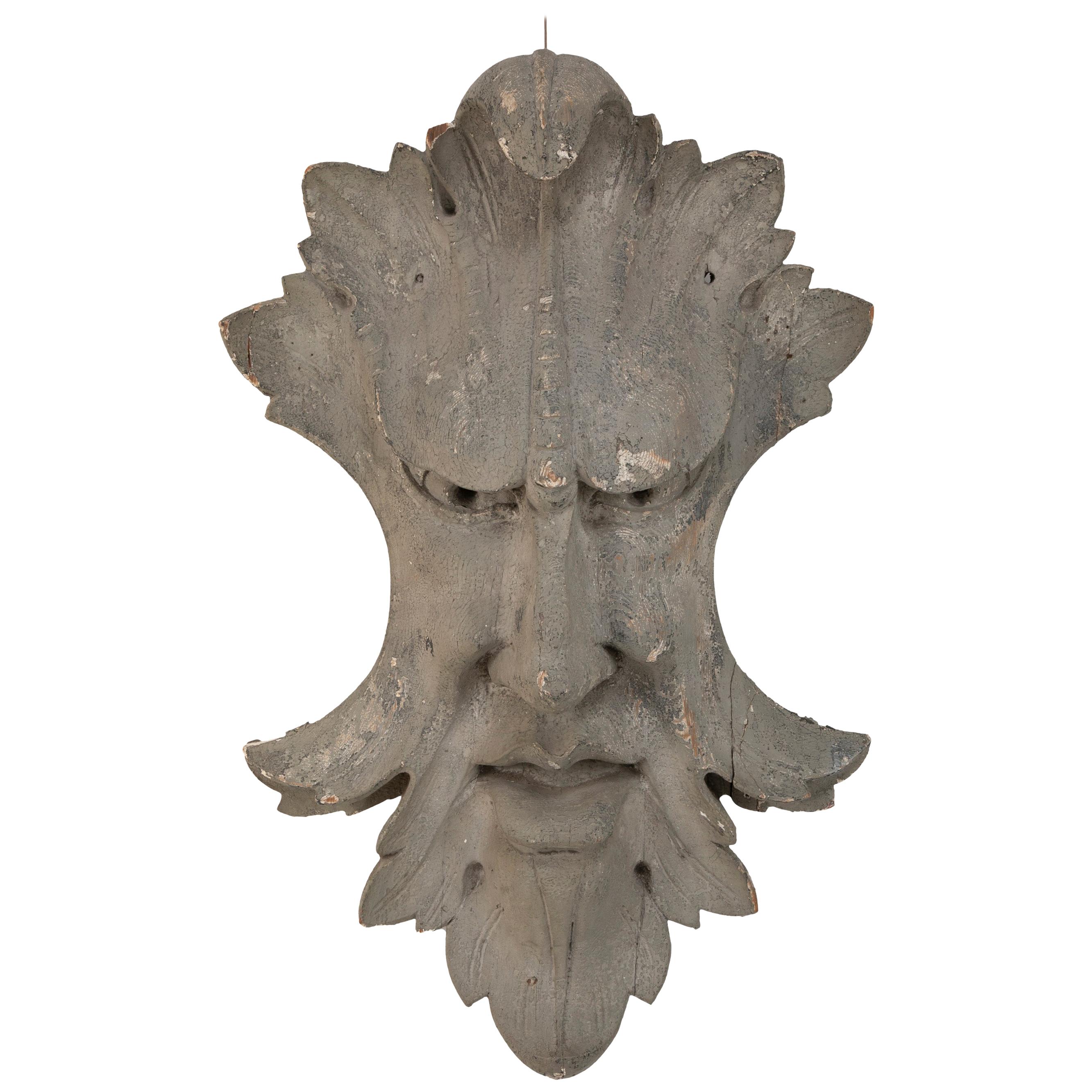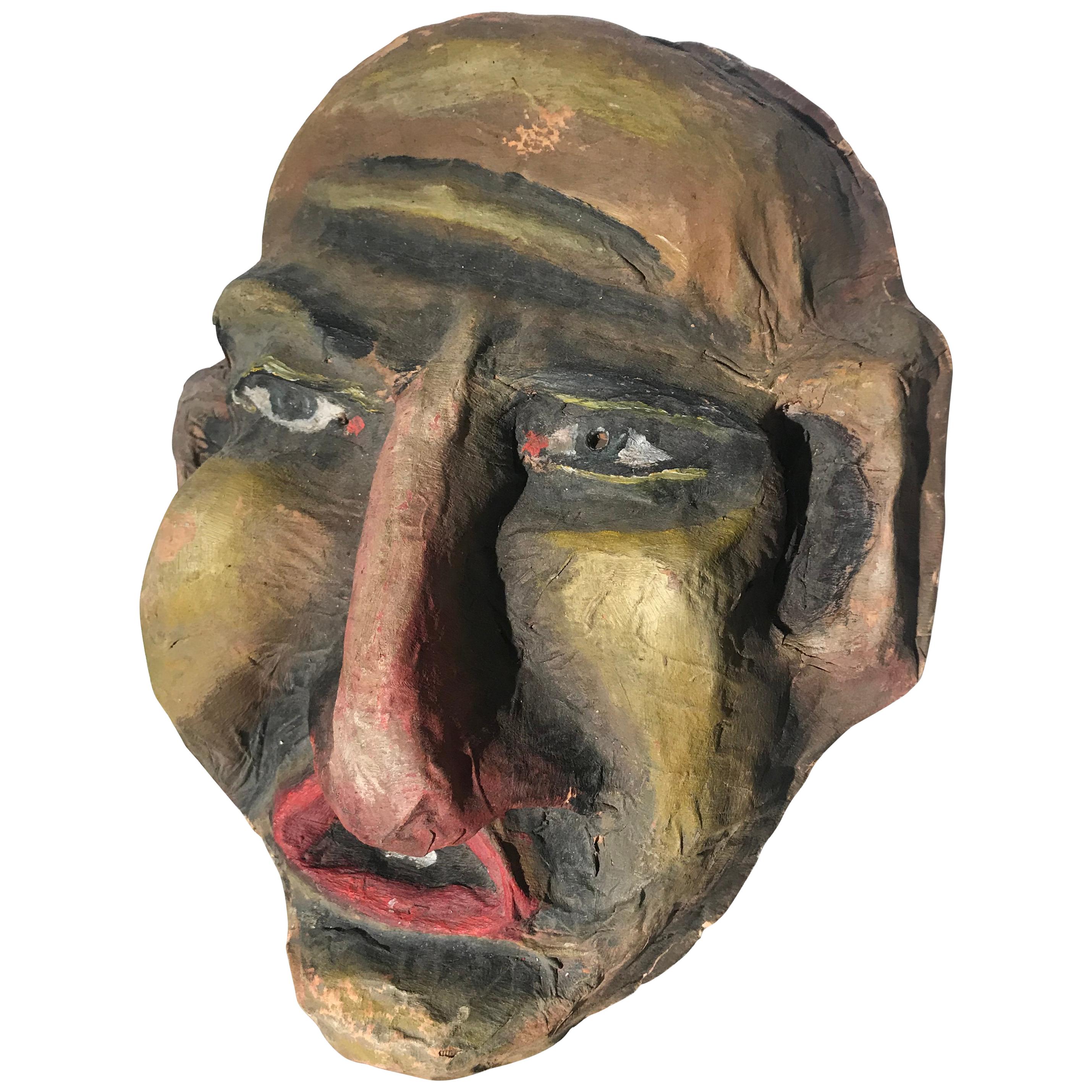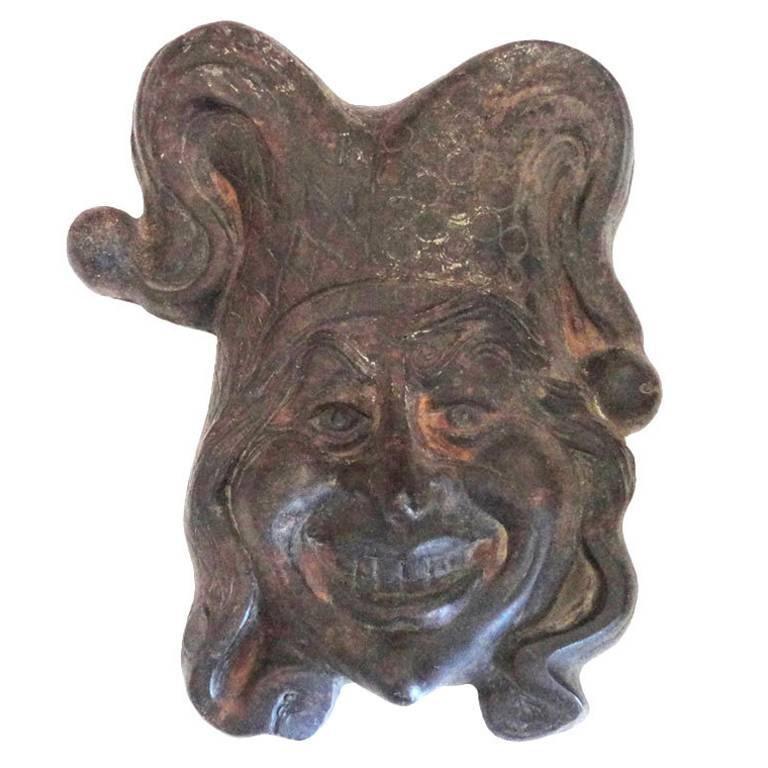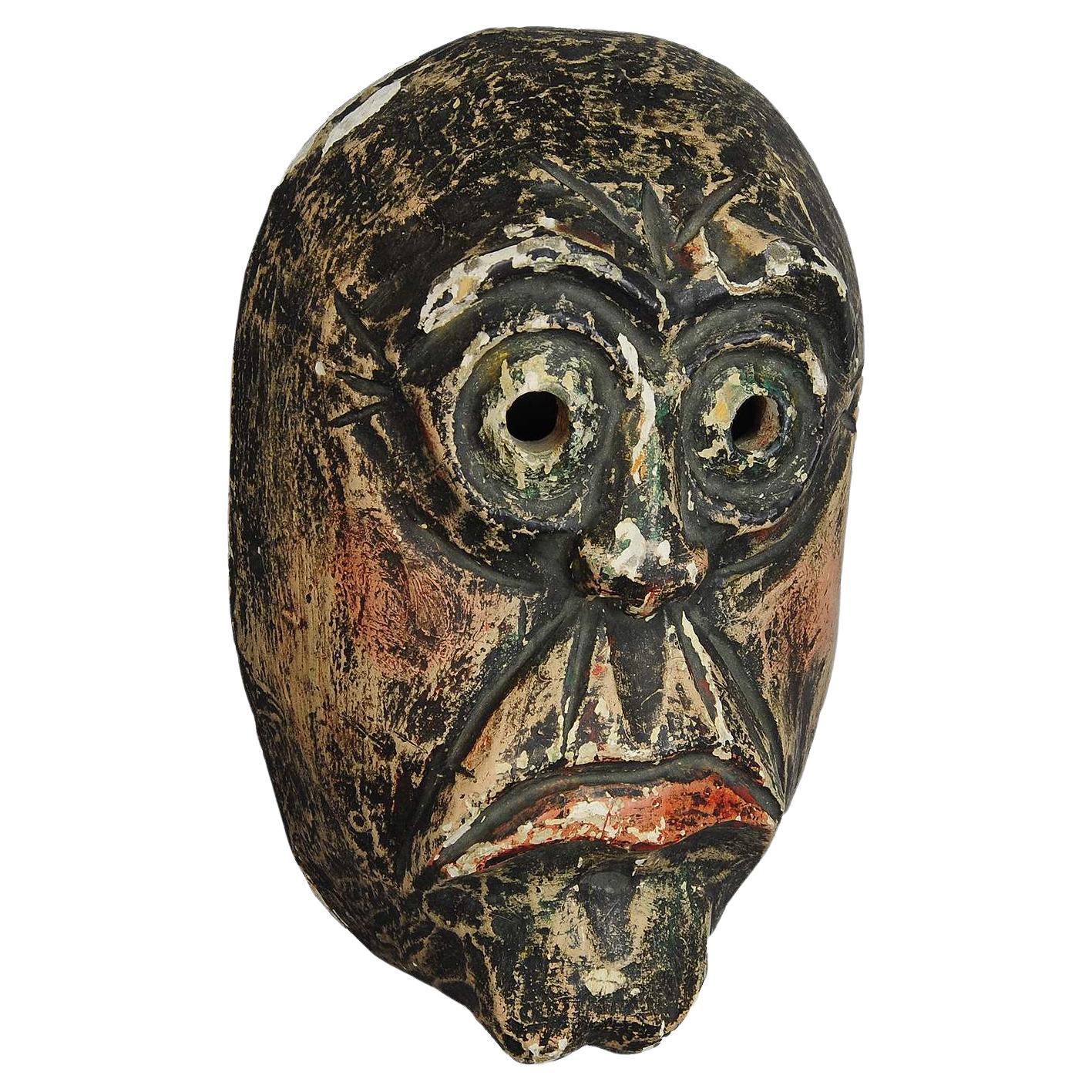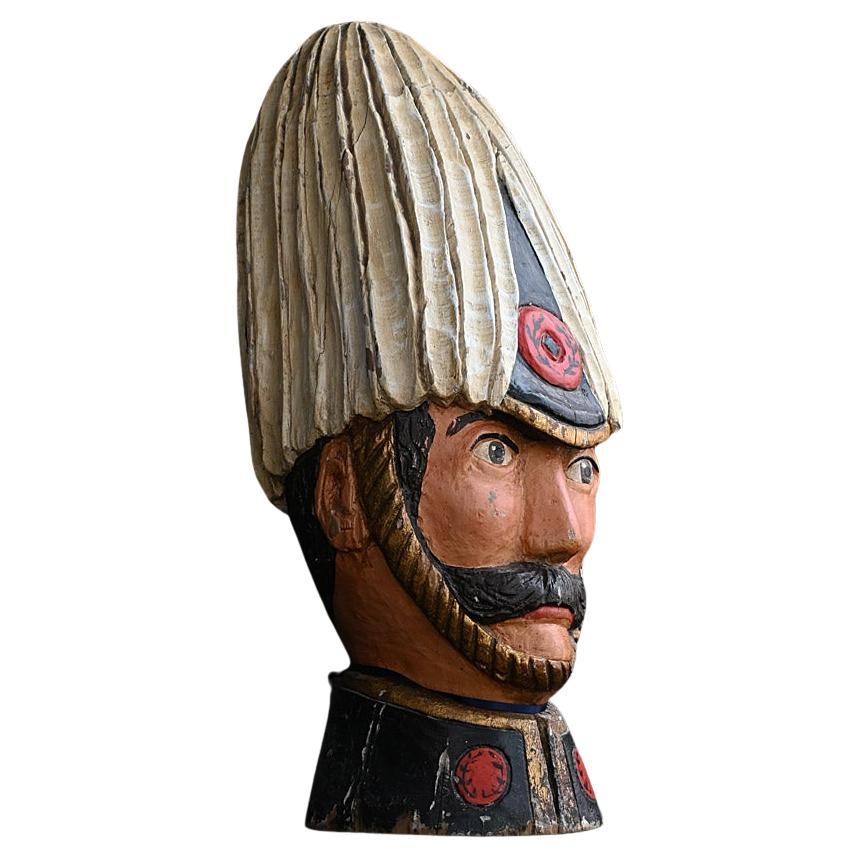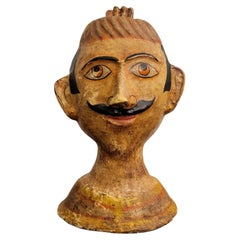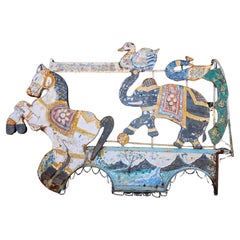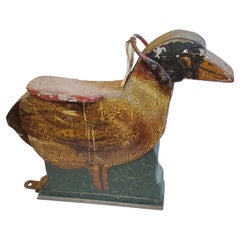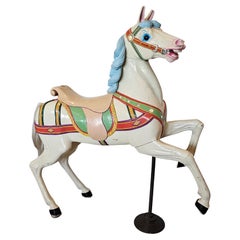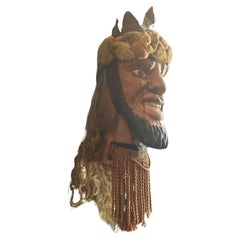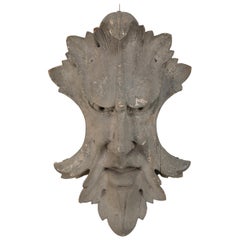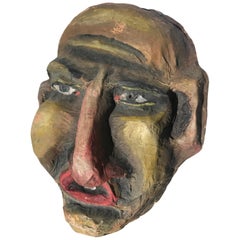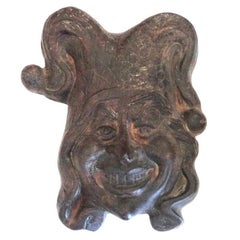Items Similar to 19th Century Carousel Ornament Painted Cast Iron King Mask Amusement Folk Art
Want more images or videos?
Request additional images or videos from the seller
1 of 9
19th Century Carousel Ornament Painted Cast Iron King Mask Amusement Folk Art
$2,500per set
£1,896.09per set
€2,177.74per set
CA$3,581.60per set
A$3,943.07per set
CHF 2,015.31per set
MX$47,061.64per set
NOK 25,659.24per set
SEK 24,011.33per set
DKK 16,266.42per set
About the Item
A rare European antique hand painted cast iron carnival carousel embellishment.
Once decorating a 19th century country fair carousel amusement ride, the sculptural ornament depicting a medieval European king with crown, wavy hair, and richly detailed face, polychrome decorated, mounted on a later wooden panel.
Dimensions: (approx)
15.5" High, 11.5" Wide, 8" Deep
Well preserved museum quality example, in great original antique condition with nicely aged warm rustic distressed patina. Retaining original antique character and old world charm. Wear consistent with age and use, including scattered paint losses, nothing that detracts from the display but only adds to the sophisticated antique character, elegant warmth, and rich historical depth.
- Dimensions:Height: 15.5 in (39.37 cm)Width: 11.5 in (29.21 cm)Depth: 8 in (20.32 cm)
- Sold As:Set of 2
- Style:Folk Art (In the Style Of)
- Materials and Techniques:
- Place of Origin:
- Period:
- Date of Manufacture:Circa 1880
- Condition:Wear consistent with age and use. Minor losses. Minor fading. Well preserved museum quality example, in great original antique condition w/nicely aged warm rustic distressed patina. Wear consistent with age and use, including scattered paint losses. Presents splendidly.
- Seller Location:Forney, TX
- Reference Number:1stDibs: LU5977234268542
About the Seller
4.8
Platinum Seller
Premium sellers with a 4.7+ rating and 24-hour response times
Established in 2013
1stDibs seller since 2021
300 sales on 1stDibs
Typical response time: <1 hour
- ShippingRetrieving quote...Shipping from: Forney, TX
- Return Policy
Authenticity Guarantee
In the unlikely event there’s an issue with an item’s authenticity, contact us within 1 year for a full refund. DetailsMoney-Back Guarantee
If your item is not as described, is damaged in transit, or does not arrive, contact us within 7 days for a full refund. Details24-Hour Cancellation
You have a 24-hour grace period in which to reconsider your purchase, with no questions asked.Vetted Professional Sellers
Our world-class sellers must adhere to strict standards for service and quality, maintaining the integrity of our listings.Price-Match Guarantee
If you find that a seller listed the same item for a lower price elsewhere, we’ll match it.Trusted Global Delivery
Our best-in-class carrier network provides specialized shipping options worldwide, including custom delivery.More From This Seller
View AllVintage Indian Noble Papier Mache Maharajah Bust Sculpture
Located in Forney, TX
A very large and absolutely charming vintage Indian papier mâché portrait bust of a male Maharajah (Raja or Indian noble prince).
Born in India...
Category
Mid-20th Century Indian Busts
Materials
Other
1940s/1950s Carnival Ride Panel - Monumental Hand Painted Metal Carousel Salvage
Located in Forney, TX
A rare, whimsical, and most impressive monumental scale midcentury American traveling carnival hand painted metal ride panel!
United States, circa 1940s/1950s, almost certainly fro...
Category
Mid-20th Century American Folk Art Carnival Art
Materials
Metal
Rare Early Childrens Carousel Ride Bird Figure Antique Carnival Folk Art
Located in Forney, TX
Acquired from the nationally known Fort Worth Museum of Science & History (originally opened in 1945 as the Fort Worth Children's Museum), this remarkable very early carousel ride is the last we have available from the original menagerie group we aquired (the stag deer, parrot, and fox rides from the same carousel already sold)
Lynx Hollow Antiques is proud to present this scarce one-of-a-kind antique European early dobby platform flat...
Category
Antique 19th Century Dutch Folk Art Carnival Art
Materials
Iron
19th Century German Carved Polychrome Carousel Horse by P. Schneider
Located in Forney, TX
A rare antique, circa 1890s, German hand carved and painted wood carousel horse carnival fair ride by Peter Schneider (famous for making the first double decker carousel in 1898).
...
Category
Antique Late 19th Century German Folk Art Statues
Materials
Wood
Antique American Carousel Horse Carnival Ride Attrib Charles Dare
Located in Forney, TX
A charming antique, circa 1920, American track machine carousel horse amusement ride attributed to legendary carver Charles W. Dare Company (United States), now mounted on a custom r...
Category
Early 20th Century American Folk Art Carnival Art
Materials
Wood, Paint
Antique Japanese Noh theatre Carved Painted Wooden Ko-Omote Mask
Located in Forney, TX
A scarce antique Japanese Noh theatre hand carved and painted wooden mask of Ko-Omote.
Sculpted in Japan in the 19th century, Ko-omote (literally ...
Category
Antique 19th Century Japanese Edo Sculptures and Carvings
Materials
Cypress, Paint
You May Also Like
A Late 19th Century Hand-Carved Wood Sicilian Head of a Saracen Marionette
Located in Catania, Sicilia
A Sicilian Marionette head depicting a Saracene, it's a part of " Opera dei Pupi " inspired by The French poem " La Chanson de Roland ". This one it's in original condition with consistent signs of use and age, original fabric and natural hair.
A Late 19th Century Hand-Carved Wood Sicilian Head...
Category
Antique Late 19th Century Sicilian Medieval Figurative Sculptures
Materials
Iron
Carved and Painted Wood Architectural Element in the Form of a Mask "Green Man"
Located in Stamford, CT
A carved and painted wood "Green Man" mask from a facade of a mansion near Seattle, late 19th century. The Green Man is a legendary being primarily interpreted as a symbol of rebir...
Category
Antique 1890s American Folk Art Sculptures and Carvings
Materials
Wood
Unusual Vintage Paper Mache Folk Art, Parade "Carnival" Mask
Located in Buffalo, NY
Unusual vintage papier mâché Folk Art..parade "carnival" theater mask.
Category
Vintage 1960s American Folk Art Carnival Art
Materials
Paper
Rare 19th Century Cast Iron Court Jester Folk Art Hanging Sculpture
Located in Los Angeles, CA
Fantastic 19th century wall hanging folk sculpture of the English court jester, looks like the joker. This folky cast sculpture looks like it was somethi...
Category
Antique 19th Century American Folk Art Sculptures
Materials
Iron
$3,080 Sale Price
20% Off
Traditional Handcarved and Painted Tyrolian Carnival Mask
Located in Berghuelen, DE
Traditional handcarved and painted tyrolian carnival mask
An nice antique wooden carved carnival mask which comes from the region of South Tyrol. Made of handcarved and handpainted ...
Category
Early 20th Century German Black Forest Wall-mounted Sculptures
Materials
Wood
Circa 1900 English fairground hand carved timber bust
Located in London, GB
Circa 1900 English fairground hand carved timber bust
An important piece of fairground history, in the form of a circa 1900 English fairground carved fragment of Field Marshal Hora...
Category
Vintage 1920s British Late Victorian Sculptures and Carvings
Materials
Wood
More Ways To Browse
Antique Iron Art
Cast Iron Art
Antique Carousels
Polychrome Cast Iron
Mangle Board
Sicilian Puppet
Springerle Molds
Wood Carving Owl
Anri Wood Carvings
Antique Carved Coconut Shells
Antique Springerle Molds
Maori Carving
Speculaas Mold
Stork Nest
Vintage Swedish Dala
Antique Eel Fork
Antique Speculaas Mold
Cast Iron Santa
